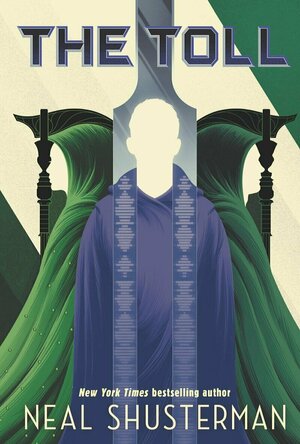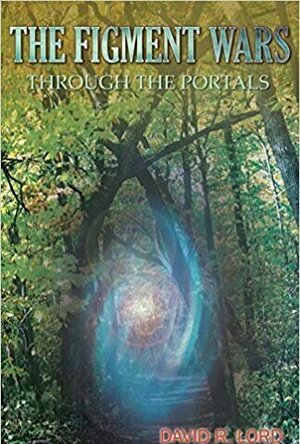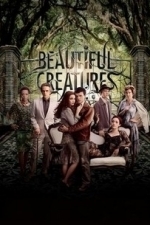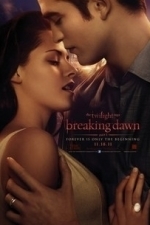Sophia (Bookwyrming Thoughts) (530 KP) rated Oath of Servitude (The Punishment Sequence, #1) in Books
Jan 23, 2020
First off, I would like to thank the author for giving me a copy of the book! (That doesn't bias my review by all means.) I really enjoyed it. I also loved the cover. Hopefully, she appears in future covers. :)
I've always admired authors who are able to bounce from one character's POV to another one. I find that hard to do myself and I guess I myself fail at that in a way when I was on MissLiterati writing Supernaturals and other stories of randomisimo, which I now stopped writing about. :p
I wonder what my life would be like if I were only a foot tall (or less). Tiny notebooks and tiny pens... tiny everything! Actually, that reminds me of a crafting book I was so immersed in when I was in elementary school. The tiny cupcakes were adorable. Too bad I fail to be a cook (I broke the stove and was never trusted to cook again. Major oops). It was also disappointing that I never had enough materials to make them. It was fun reading/browsing through that crafting book. Connection being made (Old habits haunt later apparently), I'm going back to the right trail (kinda).
The book reminds me of a series I enjoy reading: The Iron Fey. Cailin reminds me of a certain ice dude of which I shall keep anonymous that is distant and doesn't give off much info until later. Or is that a bit of Teague as well? Anyhoo, Teague reminds me of a certain prankster and summer chick with personalities mixed together. Minus being blind and an alcoholic (and possibly MANY others). It also reminded me of The Iron Fey because of the unnatural relationship between 2 different types of fey species, or in this case, a pixi and a human. (Curiosity spikes up the question: What will happen if the Portune finds out about their relationship?)
I especially loved Cailin's and Teague's wits when they're around each other. Their conversations had a mix of humor and seriousness rolled with awesomous. I also enjoyed the drama within the pixi clans outside of Cailin's bubble of punishment. The Portune reminds me of another book with a faction, in this case clan, that are "greedy" for power, although I would like them better if you compare the two. Though they're a bit greedy for power and have a zillion threats if you break a rule, all they want is to keep the pixi's in line and not expose their existence to humans. It's all about safety for the pixi's. ^_^ It does makes sense though. I wouldn't want to be exposed to giant-like beings if I were them.
What really kept me from giving it full a perfect score were the grammatical and spelling errors, but there were none that really distracted me from the smooth and steady flow of the words throughout the story. I also felt there was a bit of a rush in the romance between Teague and Cailin. :/ Though not your typical YA Paranormal Romance story, I recommend the book to those who enjoy reading about faeries and looking for something that's not typical.
And as I may sometimes say about the endings of stories....
Ohhhh, the AGONY of the Cliff-Hanger(s)!
(I'm not kidding. I wonder how cliffs I'm really hanging on to now in total of all books. No doubt: MANY)
<a href="https://bookwyrmingthoughts.com/review-oath-of-servitude-by-ce-wilson/"; target="_blank">This review was originally posted on Bookwyrming Thoughts</a>
Ivana A. | Diary of Difference (1171 KP) rated The Toll (Arc of a Scythe, #3) in Books
Feb 3, 2020
<a href="https://diaryofdifference.com/">Blog</a>; | <a href="https://www.facebook.com/diaryofdifference/">Facebook</a>; | <a href="https://twitter.com/DiaryDifference">Twitter</a>; | <a href="https://www.instagram.com/diaryofdifference/">Instagram</a>; | <a href="https://www.pinterest.co.uk/diaryofdifference/pins/">Pinterest</a>;
#1 <a href="https://www.goodreads.com/review/show/2656699288">Scythe</a>; - ★★★★★
#2 <a href="https://www.goodreads.com/review/show/2998629500">Thunderhead</a>; - ★★★★★
#3 <a href="https://www.goodreads.com/review/show/3080800725">The Toll</a> - ★★★★★
<img src="https://diaryofdifference.com/wp-content/uploads/2020/01/Book-Review-Banner-20.png"/>;
And here is my review of The Toll. We have reached the end of the series, guys.
It’s been three years since Rowan and Citra disappeared; since Scythe Goddard came into power; since the Thunderhead closed itself off to everyone but Grayson Tolliver.
In this pulse-pounding conclusion to New York Times bestselling author Neal Shusterman’s Arc of a Scythe trilogy, constitutions are tested and old friends are brought back from the dead.
I don’t know how to even start this review, because I have so many emotions still! I am so in love with this series. With this finale. I am also so sad that the journey ends here and I have to part ways, re-visiting these books but never reading new ones.
A wonderful world, where death is no more, and two scythe apprentices, with the willpower to be great - they stuck to me, and they grew on me, and they did capture my heart.
<b><i>Rowan - a hero never understood.</i></b>
Fighting for the good in a bad way. Himself against the world, not afraid to give his life for the people he cares about. I salute you, Scythe Lucifer!
<b><i>Citra - a woman born to be a leader.</i></b>
A powerful force that moves the Earth she walks upon. A compassion and kindness mixed with the force of unfairness. Ready to stand up when no one else does and not afraid to do things differently. I salute you, Scythe Anastasia.
And to all the rest of the characters, and believe me, there are so many that are just as important, I also bow to you. For fighting for what you believe in, for being better humans than most and for helping a person in need. You will never be forgotten.
<b><i>Neal Shusterman, the hero of this book.</i></b>
The creator of wonderful worlds. I bow to you and I thank you for giving me a world worth remembering. For creating the Thunderhead to lead us into the future, and for giving us a glimpse of possibilities and opportunities of the “what might be”. I have endless love for your writing and will continue to be excited and read every new book you write.
I have noticed, when I really love a book and want to shout about it to everyone I know, it is quite hard to do so without spilling any spoilers. How do you write a review of mentioning all the things you loved, without ruining the story for someone else?
<b><i>Let’s try it this way:</i></b>
Guys, have a look at my review of Scythe, the first book in the series. Then read the book. Then read my review of Thunderhead. Read that book as well. And then come here, read this blurb, finish the series and find me either here, or on Instagram and Twitter, so I can tell you all the spoilers! :)
No, honestly, if you love science-fiction with a twist of fantasy and dystopia, this will be a book you will cherish forever.
<a href="https://amzn.to/2Wi7amb">Wishlist</a>; | <a
<a href="https://diaryofdifference.com/">Blog</a>; | <a href="https://www.facebook.com/diaryofdifference/">Facebook</a>; | <a href="https://twitter.com/DiaryDifference">Twitter</a>; | <a href="https://www.instagram.com/diaryofdifference/">Instagram</a>; | <a href="https://www.pinterest.co.uk/diaryofdifference/pins/">Pinterest</a>;
Night Reader Reviews (683 KP) rated The Figment Wars: Through the Portals in Books
Jan 9, 2020
Thomas and his little brother Isaac are visiting their cousin Emily at her house and they are not exactly having a good time. At Emilys house, the boys dont even have a TV to watch and they are extremely bored. Then one afternoon when Thomas goes to the woods behind the house to get Emily for lunch something amazing happens. The trees themselves bend and move, forming a portal that all three children fall into. The portal transports the children into the Realm of Imagination, a place where all the things humans imagine come to life.
https://nightreaderreviews.blogspot.com/2019/07/review-figment-wars-through-portals-by.html
https://www.austinmacauley.com/book/figment-wars-through-portals
Almost as soon as the children arrive they are attacked by Monsters but luckily they are saved by Heroes and are taken to the Library in the Impossible City. It is here that they meet Belactacus who believes that the children are Real and not just confused imaginary friends. Sadly the Council who is in charge of the portals that allow beings in the Realm of Imagination to go to the Realm of Reality is corrupted and the children are denied a portal back home. Shortly after this decision Monsters attack the Impossible City and even overwhelm the Heroes. Now the children must find a way to stop the corrupted council member from bringing all the Monsters from human imagination to life in the Realm of Reality, home of the humans.
What I liked best might not seem like much but for a story such as this one, it makes a big difference. I liked how not only was the idea of the Realm of Imagination a great concept but the creation of the Realm was well explained. Also, some of the main people in the Realm were explained to be the result of collective consciousness in humans such as the standard idea of a mother figure which was a very nice touch. What I didnt like was the budding relationship between Thomas and Emilys old imaginary friend. I actually thought it was a little creepy. At times I found myself hoping that she would be able to become real and then I thought that it would be way too much like Thomas having a relationship with his cousin.
This book falls solidly into the YA or young adult group of readers. I know this is a broad group ranging from middle school and older, but this book is actually really good and I saw nothing that would make in inappropriate for young readers. The only thing to be careful about is if an advanced reader in elementary school wanted to read this book. I dont know how well they would take to the idea that monsters such as the Boogeyman are real and just living in a different dimension so to speak. With all that being said I rate this book a 3 out of 4. Everything is extremely well thought out in this book. The idea of the Library and the collective consciousness of humans was amazing. The only reason why this book did not get a perfect rating is that I still felt like it was missing something that gave it that wonderful ability to really stand out, but few books have that.
Gareth von Kallenbach (980 KP) rated Beautiful Creatures (2013) in Movies
Aug 7, 2019
With the beginning of the first day of school a newcomer named Lena Duchannes (Alice Englert) seems to be an outcast because of her families history. Capturing the attention of Ethan he becomes more and more intrigued with her, despite the awful things that the other classmates are saying about her. Lena is the niece of Macon Ravenwood (Jeremy Irons), the owner of the one and only mysterious Gothic Ravenwood Manor. Lena has uncontrollable powers proving that some of what her classmates have been saying is true. Lena has until her sixteenth birthday to undergo the Claiming, a process that throughout the years makes a caster go to the light side or the dark side. The film also features an allstar cast such as: Alden Ehrenreich, (“Tetro”), Emmy Rossum, Thomas Mann, Emma Thompson, Rounding out the cast are Eileen Atkins, Margo Martindale, Zoey Deutch, Tiffany Boone, Rachel Brosnahan, Kyle Gallner, Pruitt Taylor Vince and Sam Gilroy.
The film Beautiful Creatures is a supernatural love story with some of the same ideas and themes as most of these supernatural teen movies based off of best selling novels. However, Beautiful Creatures was a refreshing take on the story of two young lovers, one who is human and the other who is a supernatural being. The scenery and use of the deep southern backdrops added to the mystery of the story. I have not read the book though I plan to, I am unable to comment on how close the movie was to the book. The special effects in the film were not overdone or out of place and were appropriate to each specific scene. Some comedic relief is found throughout the film and is not out of place. The flow of the story is also flawless including the music used for the soundtrack.
This film has been rated PG-13 for violence, scary images and some sexual material. I would recommend this to audiences of a variety of ages from young teen to older adult. Yes this film may have some similarities to other teen/supernatural films but all in all it is a film I definitely would recommend to our readers and I can’t wait for the second installment.
Gareth von Kallenbach (980 KP) rated The Twilight Saga: Breaking Dawn Part 1 (2011) in Movies
Aug 7, 2019
The film opens with awkward, melancholy teen Bella (Kristen Stewart), preparing for her wedding to Edward (Robert Pattinson), as their human and vampire friends assemble for the ceremony. Of course Edward’s rival Jacob (Tayler Lautner), is highly against the union as he still carries a flame for Bella. Nonetheless, the ceremony goes off as planned and Edward whisks Bella away to a remote Brazilian island to consummate their union, which apparently is a tricky endeavor, being that she is still a mortal and he is a century old vampire.
What at first is an ideal honeymoon is soon complicated when Bella and Edward discover an unexpected challenge that threatens Bella’s well-being and poses a threat to the pact between the vampires and werewolves. I will not spoil the film, even though fans of the series and books will not be any strangers to the drama and politics of the situation, but suffice it to say there is a lot on the line for all of the characters involved.
The film was rife with issues, the main one being the atrocious acting. One would think that after three previous films with the same cast, these actors would have developed some timing and chemistry with one another, especially Stewart and Pattinson who are a couple offscreen. Nothing could be further from the truth as they stiffly deliver their lines with pained and remote expressions. I am honestly at a loss as to why Bella is so captivating to both Edward and Jacob
as she is basically a dour girl who looks incredibly uncomfortable in her own skin, and yet the two are utterly captivated by her. I found the supporting cast far more interesting than the heroine and her besotted heroes. Another issue I had was that Pattinson, who got to show his acting ability in “Water for Elephants” is given little to do aside from staring at Bella and doing profile shots.
The first half of the film is basically an MTV-style wedding and honeymoon music video but the second half of the film did manage to grab and hold my attention with the ongoing plot points. It is obvious that the story is being stretched to cover two films as there are numerous unnecessary scenes such as people walking up stairs, throwing things in a garbage can, looking in mirrors, which serve little purpose other than increasing the run time of the film. Of course all of this matters little to fans of the series. The studio knows who the core audience is and the movie panders to them every chance they can, as proven by Lautner doffing his shirt not 60 seconds into the film to the squeals of delight from the teens, tweens and grown women in the audience.
Still, because it pits the Cullens against the werewolves who were their allies in the previous film, Breaking Dawn is better than the previous films. While it raises the angst and tension, it does not provide much growth for the actors as they dutifully go through the motions as best they can with the material. While it attempts to be a darker and more mature film, it still comes across as eye candy and fantasy for young women when the story and cast deserved so
much more. That being said, the film stays true to it’s core audience and gives them exactly what they have come to expect and does not stray from what has been a successful formula.

Expositor's Bible & Strong's
Book and Reference
App
"Where the word of a king is, there is power" (Ecclesiastes 8:4). You have just found the best tool...
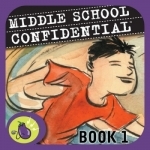
MSC1: Be Confident in Who You Are
Book and Education
App
Now for iPhone and iPad! • “As you prepare for back to school, don't forget the anxiety...[this...

Holy Bible KJV Version
Book and Reference
App
"Where the word of a king is, there is power" (Ecclesiastes 8:4). You have just found the best tool...
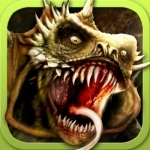
Fighting Fantasy: The Forest of Doom
Games and Book
App
Nostalgia overload! Fighting Fantasy returns with Ian Livingstone's classic, The Forest of Doom. ...
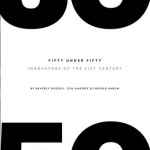
50 Under 50: Innovators of the 21st Century
Eva Maddox, Beverly Russell, Farooq Ameen and The Images Publishing Group
Book
Features design innovations that have become the visual models for idea advancement worldwide. "...a...

